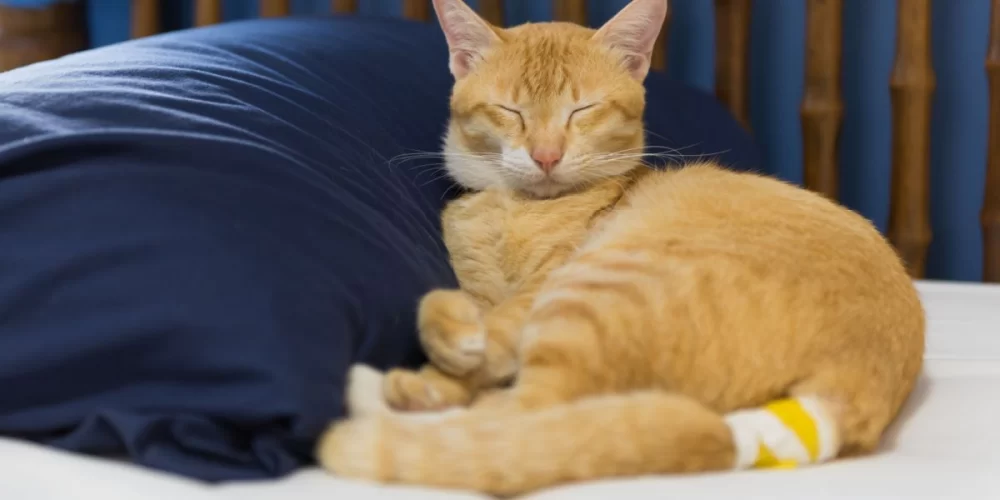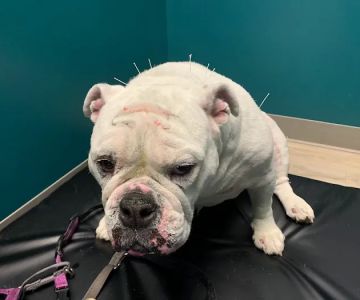What Causes a Swollen Tail and Stiffness in Cats?
As a cat owner, there are few things more concerning than noticing your cat’s tail looking swollen or feeling stiff. It’s an alarming sight, especially if your cat is usually playful and energetic. A swollen or stiff tail can be a sign of various conditions that range from minor injuries to more serious health concerns. I remember the first time I noticed my cat, Mittens, having difficulty wagging her tail and it appeared slightly swollen. I was immediately worried. After seeking help and doing some research, I learned a lot about what might cause these symptoms and how to address them. If you're experiencing a similar issue with your cat, this article will give you some insights into possible causes and solutions.
Common Causes of a Swollen or Stiff Tail in Cats
There are several possible reasons why your cat’s tail might become swollen or stiff. Understanding the underlying cause is essential for determining the appropriate treatment. Here are some of the most common causes:
- Injury or Trauma: Cats are naturally curious creatures, and they often find themselves in situations where they might injure their tails. A bite, a fall, or getting caught in something can cause swelling, bruising, or stiffness in the tail.
- Abscess or Infection: Cats can develop abscesses on their tails, particularly if they've been bitten by another animal. An abscess is a pocket of pus that can cause swelling and inflammation. These can sometimes become quite painful if left untreated.
- Arthritis: Just like humans, cats can develop arthritis as they age. Arthritis in the tail can cause stiffness, particularly in older cats. The condition can lead to difficulty moving the tail, which may appear swollen or rigid.
- Feline Hyperesthesia Syndrome: Also known as "rippling skin syndrome," this is a neurological condition that can cause unusual behaviors in cats, including twitching, skin rippling, and tail stiffness. While this condition is not always linked to swelling, it can affect a cat’s tail in noticeable ways.
- Infections or Inflammation: Various infections can lead to swelling and stiffness in the tail. Bacterial or fungal infections can result from scratches or bites, leading to localized swelling and discomfort.
- Tail Pull or Nerve Damage: Cats can experience nerve damage if their tails are pulled or twisted too hard, causing stiffness and swelling. This can happen if a cat is handled roughly or if it gets caught in a door or another object.
When I noticed Mittens' tail was swollen, I initially thought it might have been an injury from her adventurous escapades around the house. However, when the swelling didn't go down, I realized it could be something more. It’s essential to take your cat to the vet for a proper diagnosis if you notice any unusual swelling or stiffness in the tail.
Recognizing Symptoms and What to Look For
If your cat’s tail is swollen or stiff, there are other signs to look for that might indicate the severity of the condition. Pay attention to the following symptoms:
- Visible Swelling or Heat: Swelling in the tail is usually noticeable and may feel warm to the touch if there's inflammation. This can indicate an infection or injury.
- Pain or Sensitivity: If your cat reacts when you touch its tail or seems uncomfortable when moving it, pain could be a significant factor. Cats often show discomfort by hissing, growling, or pulling away.
- Loss of Tail Function: If your cat is unable to move its tail normally or if it appears limp, this could point to nerve damage or severe injury.
- Change in Behavior: Cats with tail problems may exhibit changes in their behavior, such as becoming more withdrawn, aggressive, or less active than usual.
- Increased Grooming or Licking: Cats with injuries or infections might lick their tails excessively in an attempt to soothe the pain or discomfort.
In Mittens' case, she was licking her tail obsessively, which made me realize something wasn’t right. Upon further inspection, I noticed the tail was not only swollen but also quite stiff. That’s when I knew I needed to take her to the vet for a professional evaluation.
How a Vet Diagnoses a Swollen or Stiff Tail
If your cat is exhibiting signs of tail swelling or stiffness, a vet will perform a series of diagnostic tests to determine the cause. Here’s what you can expect:
- Physical Examination: The vet will carefully examine your cat’s tail for any signs of trauma, infection, or abnormalities. They will likely feel the tail to check for swelling, heat, or any signs of fractures or dislocations.
- X-rays or Ultrasound: If there’s concern about bone fractures, dislocations, or internal injuries, the vet may recommend an X-ray or ultrasound to get a clearer picture of what’s going on beneath the surface.
- Blood Tests: If an infection or inflammation is suspected, blood tests can help identify any underlying infections or conditions such as abscesses or arthritis.
- Biopsy: In rare cases, a biopsy may be necessary to rule out tumors or more serious conditions if the swelling doesn’t improve with initial treatments.
When I took Mittens to the vet, they performed a physical examination and recommended an X-ray to rule out any fractures. Thankfully, the issue was diagnosed as an infection caused by a minor injury she had sustained from a small fall. The vet prescribed antibiotics to clear up the infection and advised me on some home care steps to help her heal.
Treating a Swollen or Stiff Tail in Cats
Depending on the underlying cause, treatment for a swollen or stiff tail can vary. Here are some common approaches your vet might recommend:
- Antibiotics: If the swelling is caused by an infection, antibiotics will help reduce inflammation and treat the infection. This is typically the treatment when an abscess or bacterial infection is the cause.
- Pain Relief: If your cat is in pain, the vet may prescribe painkillers or anti-inflammatory medications to help manage their discomfort while they heal.
- Physical Therapy: In cases of nerve damage or stiffness due to arthritis, physical therapy may be recommended. Gentle stretching and massage can help your cat regain some movement in their tail.
- Surgical Intervention: In severe cases, where there is significant injury or nerve damage, surgery may be required. This is rare but necessary in cases where the tail is broken or the nerves are severely damaged.
For Mittens, her treatment involved antibiotics and anti-inflammatory medication. Over the next few days, I made sure to follow the vet’s advice carefully. Slowly but surely, the swelling reduced, and she was back to her usual self in no time.
How to Care for Your Cat’s Tail at Home
Once your cat receives a diagnosis and treatment plan, there are a few steps you can take at home to aid in the recovery process:
- Limit Movement: Keep your cat indoors and prevent them from engaging in high-energy activities that could exacerbate the injury or inflammation.
- Monitor Licking: If your cat is licking their tail excessively, try to prevent them from doing so by using an Elizabethan collar or covering the area with a bandage as recommended by your vet.
- Follow Medication Instructions: Administer any prescribed medications as directed by your vet, and be sure to complete the entire course of antibiotics, even if your cat seems to feel better before finishing the treatment.
Managing your cat’s tail health at home requires patience, but with the right care, your cat will recover fully. If you notice any changes in their condition, don’t hesitate to reach out to your vet for further guidance.
In the end, Mittens’ recovery was smooth, and I learned the importance of keeping an eye on subtle changes in her behavior. By being proactive, I was able to address the issue early on and avoid more severe complications. If you notice any signs of tail swelling or stiffness in your cat, don’t wait—get them checked by a vet right away to ensure they get the care they need.












